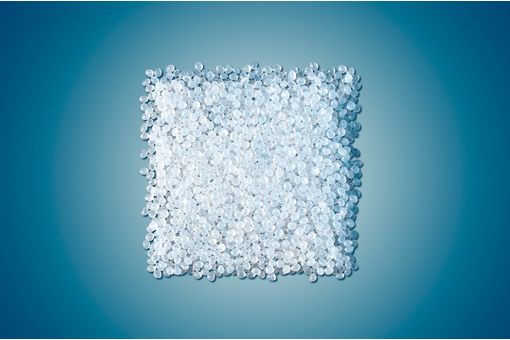Interviews
News Flash
Synthetic fibers with PolyTHF stay flexible even in the cold
12 Feb '11
4 min read
Crisp cold air, sparkling fresh-fallen snow and a swift board beneath their feet: that's all it takes to make winter athletes happy. As they speed down the slope at full tilt, swiftly ducking and weaving their way between the slalom poles and whirling up the snow, it can get pretty warm inside the ski suit, even when the temperature is freezing outside.
“A synthetic fiber with truly exceptional properties is needed if the clothing is to withstand not only the cold, but also the athlete's vigorous movements and perspiration,” says Dr. Dieter Rodewald, Senior Manager Technical Services, BASF Intermediates in Asia.
“Spandex fibers, made from the BASF intermediate PolyTHF, are ideally suited to these extreme conditions. The textiles are permeable to water vapor and retain their elasticity and flexibility even at icy temperatures, making the fabric feel like a second skin.”
Well into the 20th century, this was something people could only dream of. As they ventured out into the snow wearing a woolen jumper, velvet pants or fur jacket, they would feel their fingers – and their clothes – gradually getting cold. The natural fibers became rigid and the pants felt as stiff as a board. The advent of synthetic fibers in the nineteen-thirties put an end to this unhappy situation.
Spandex fibers are unfazed by frost or humidity. A look at the labels on different items of clothing will tell you that most textiles contain some spandex: you'll find it in socks, in long underpants and leggings, sweaters, T-shirts and jacket linings. In fabrics, spandex fibers always come mixed with other fibers, for example wrinklefree and tear-resistant polyamide. Functional underwear such as ski underpants or jerseys contains five to ten percent spandex fibers. The spandex content in stretch jeans is about three percent.
“Spandex fibers come in a variety of grades, for example customized for swimwear or high-quality outerwear applications,” explains Professor Thomas Gries, Director of the Institute of Textile Technology at RWTH Aachen University. The more stretch a fabric is to have, the more PolyTHF the spandex fiber should contain. “The spandex content in functional wear, swimwear, jerseys and underwear is higher than in upmarket outerwear,” says Gries. A low spandex content is sufficient to accommodate the normal range of everyday movements in trousers or shirts.
Athletes especially benefit from the superior elasticity of a spandex fiber, which consists of about 80 percent PolyTHF. With this percentage, even doing the splits would be no challenge for the pants.
“Garments made of fabric containing spandex retain their fit even during extreme body movements,” explains Gries. “Spandex fibers will stretch to as much as seven times their original length.”
“A synthetic fiber with truly exceptional properties is needed if the clothing is to withstand not only the cold, but also the athlete's vigorous movements and perspiration,” says Dr. Dieter Rodewald, Senior Manager Technical Services, BASF Intermediates in Asia.
“Spandex fibers, made from the BASF intermediate PolyTHF, are ideally suited to these extreme conditions. The textiles are permeable to water vapor and retain their elasticity and flexibility even at icy temperatures, making the fabric feel like a second skin.”
Well into the 20th century, this was something people could only dream of. As they ventured out into the snow wearing a woolen jumper, velvet pants or fur jacket, they would feel their fingers – and their clothes – gradually getting cold. The natural fibers became rigid and the pants felt as stiff as a board. The advent of synthetic fibers in the nineteen-thirties put an end to this unhappy situation.
Spandex fibers are unfazed by frost or humidity. A look at the labels on different items of clothing will tell you that most textiles contain some spandex: you'll find it in socks, in long underpants and leggings, sweaters, T-shirts and jacket linings. In fabrics, spandex fibers always come mixed with other fibers, for example wrinklefree and tear-resistant polyamide. Functional underwear such as ski underpants or jerseys contains five to ten percent spandex fibers. The spandex content in stretch jeans is about three percent.
“Spandex fibers come in a variety of grades, for example customized for swimwear or high-quality outerwear applications,” explains Professor Thomas Gries, Director of the Institute of Textile Technology at RWTH Aachen University. The more stretch a fabric is to have, the more PolyTHF the spandex fiber should contain. “The spandex content in functional wear, swimwear, jerseys and underwear is higher than in upmarket outerwear,” says Gries. A low spandex content is sufficient to accommodate the normal range of everyday movements in trousers or shirts.
Athletes especially benefit from the superior elasticity of a spandex fiber, which consists of about 80 percent PolyTHF. With this percentage, even doing the splits would be no challenge for the pants.
“Garments made of fabric containing spandex retain their fit even during extreme body movements,” explains Gries. “Spandex fibers will stretch to as much as seven times their original length.”
Popular News
Leave your Comments
Editor’s Pick
Pratik Gadia
The Yarn Bazaar - Filosha Infotech Private Limited
Andreas Rass
ZIMMER AUSTRIA | Digital Printing Systems
































-Ltd..jpg?tr=w-120,h-60,c-at_max,cm-pad_resize,bg-ffffff)





.jpg?tr=w-120,h-60,c-at_max,cm-pad_resize,bg-ffffff)
.jpg?tr=w-120,h-60,c-at_max,cm-pad_resize,bg-ffffff)






